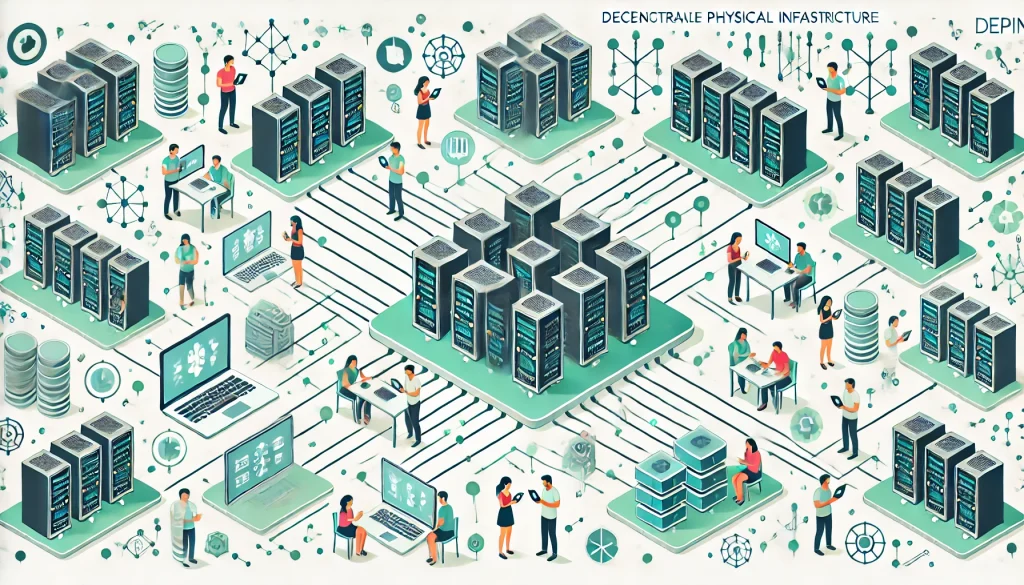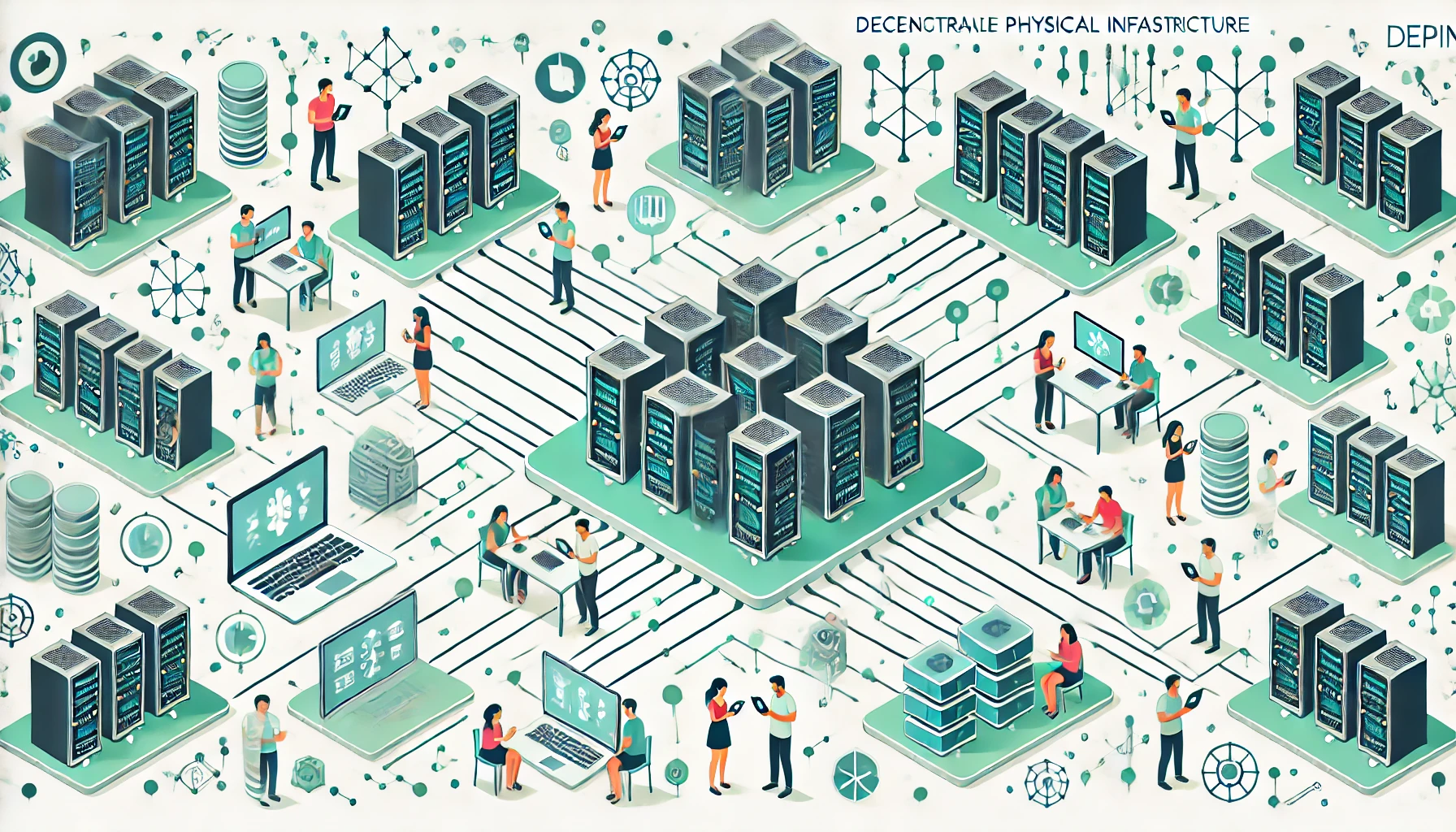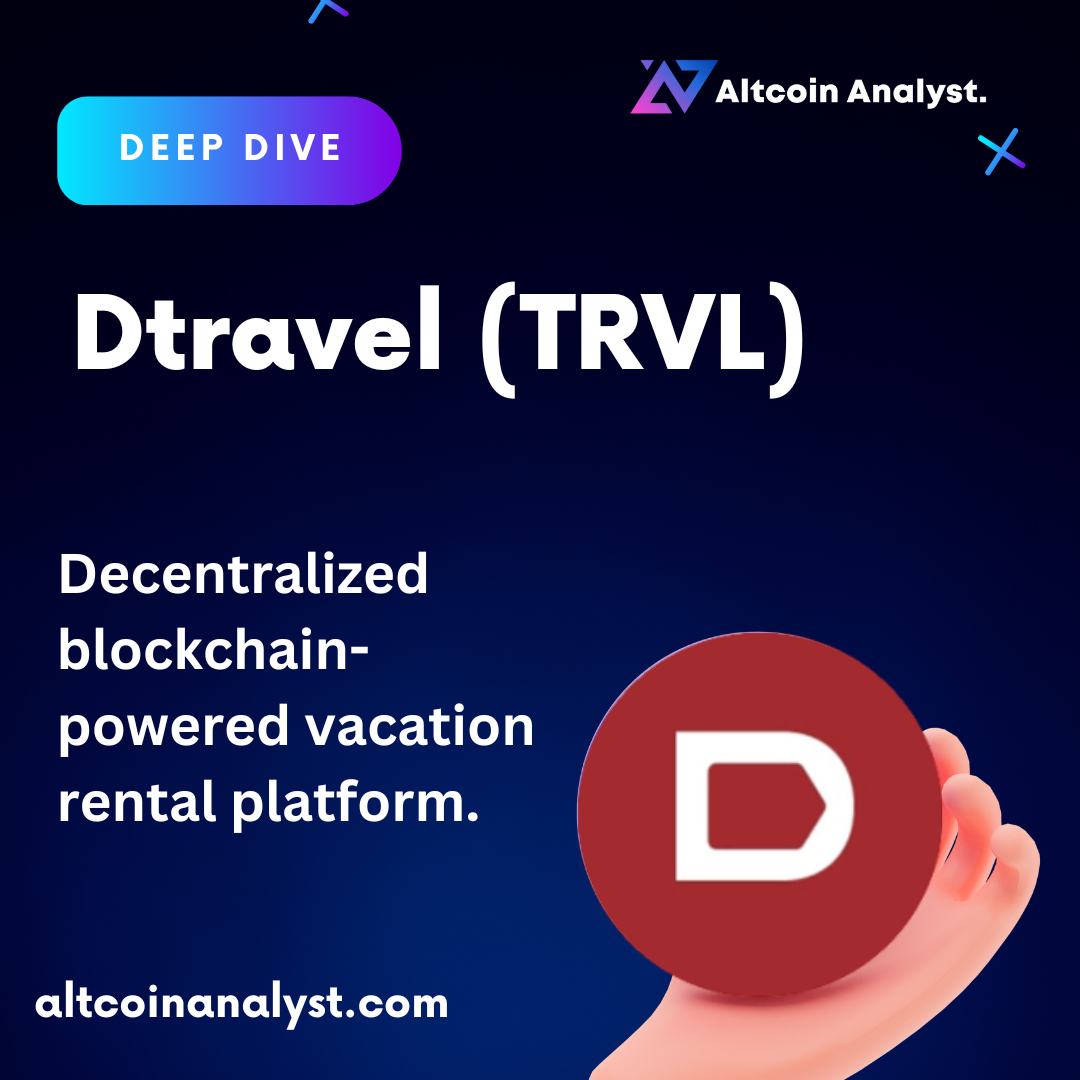
Just think of a world where your unused computer storage earns you money, or where entire communities band together to create a free, shared internet. This isn’t science fiction; it’s the future envisioned by Decentralized Physical Infrastructure Networks (DePINs).
With a market capitalization exceeding $23 billion (according to CoinGecko, surpassing even Decentralized Exchange tokens), DePINs are rapidly transforming how we build and manage infrastructure.
This guide will shed light on what is DePIN, explore its inner workings, discuss the advantages it offers, and the security considerations to keep in mind. So, stay tuned and keep reading.
What Are DePins?
DePINs operate on a peer-to-peer (P2P) model, allowing individuals to contribute their physical infrastructure resources – spare storage space, wireless connectivity, sensors, or even power grids – to a shared network.
In return, they earn rewards in the form of cryptocurrency tokens. This is like renting out your unused apartment instead of letting it sit empty. DePINs leverage the concept of incentives and game theory, already familiar from Web3 (the decentralized version of the internet), to drive user participation.
But DePINs take it a step further by integrating these principles with real-world infrastructure, creating a system with mass appeal.
So, How Does DePIN Work?
DePINs function with four key components:
- Blockchain Backbone: At the core lies blockchain technology. Smart contracts, self-executing programs on the blockchain, automate tasks like managing fees, distributing rewards, and enforcing network rules.
- Physical Infrastructure Network: This network is the physical layer, made up of equipment that transmits data, resources, or information. This could include anything from switches and routers to various networking devices.
- Token Rewards: Individuals or companies providing services to the network are rewarded with crypto tokens. The specific reward structure and type of token depend on the DePIN project itself.
- Off-Chain Network: This network facilitates data transactions that occur outside the main blockchain network. Users can purchase resources like computing power, data storage, and connectivity from external service providers through this off-chain network.
These four elements work together to create a self-sustaining cycle known as the DePIN flywheel.
Top DePIN Crypto Projects to Know in 2024
The DePIN landscape is rapidly evolving, with new projects emerging all the time. Here are a few of the top DePIN crypto projects to keep an eye on in 2024:
- Akash Network (AKT): This open-source supercloud blockchain network provides a decentralized platform for renting computing resources. By leveraging idle hardware, Akash offers potentially significant cost savings compared to traditional cloud providers. Businesses and developers can access scalable compute power on-demand.
- Filecoin (FIL): A pioneer in decentralized storage, Filecoin incentivizes individuals to rent out unused storage space on their computers. This approach can lead to lower costs and improved data security compared to centralized storage solutions.
- Storj (STORJ): Similar to Filecoin, Storj is another decentralized storage network that leverages underutilized storage capacity on personal devices. STORJ token holders contribute storage space and bandwidth to the network and are rewarded for their participation.
- Livepeer (LPT): This project focuses on creating a decentralized content delivery network (dCDN). LPT token holders contribute bandwidth and computational resources to the network, enabling efficient and secure video streaming.
- Helium (HNT): This DePIN project utilizes a network of hotspots built on low-powered wireless devices to create a decentralized internet of things (IoT) network. HNT token holders earn rewards for providing wireless coverage and participating in network consensus.
Overall, DePIN projects have the potential to disrupt traditional cloud computing models by offering cost-effective, secure, and scalable solutions. As the ecosystem continues to mature, we can expect to see even more innovative applications emerge.
DePIN vs. Traditional Cloud Providers: Cost Comparison
One of the most compelling advantages of DePIN projects lies in their potential to offer cost savings compared to traditional cloud providers. Here’s a breakdown of how this can be achieved:
- Elimination of intermediaries: DePIN platforms often operate on a decentralized model, reducing overhead costs associated with intermediaries. This can lead to lower service fees for users.
- Utilization of idle resources: By incentivizing users to contribute unused computing power or storage space, DePIN projects create a vast pool of resources. This efficient use of idle assets can drive down costs.
- Token-based economics: Many DePIN projects utilize token-based economies, which can create competitive pricing pressures among service providers. Users can benefit from this competition by accessing services at lower rates.
- Pay-per-use models: Similar to traditional cloud computing, DePIN platforms often offer pay-per-use models, allowing users to only pay for the resources they actually consume. This can result in significant cost savings compared to upfront investments in hardware and software.
The DePIN Flywheel: A Self-Propagating Network Effect
The DePIN flywheel is the heart of the DePIN ecosystem, a self-reinforcing cycle that fuels network growth and user adoption. It’s a powerful mechanism that creates a win-win situation for everyone involved: users, contributors, investors, and ultimately, the DePIN network itself.
Here’s a deeper dive into how the flywheel spins:
1. Ignition:
Increased Usage – The flywheel starts with a spark – increased usage of the DePIN network. This could be driven by a growing demand for data storage, computing power, or any other service offered by the network. As more people discover the benefits of DePINs, like lower costs or faster speeds, they join the network and start consuming its resources.
2. Fueling the Fire:
Token Price Rise – With increased usage, demand for the DePIN token, the network’s native cryptocurrency, naturally rises. This can happen through several mechanisms:
Scarcity: Some DePIN projects implement token burning mechanisms, where a portion of tokens used for transactions are permanently removed from circulation. This reduces the overall supply of tokens, making existing ones more valuable.
Buybacks: The DePIN network itself might use its revenue to buy back tokens from the market, taking them out of circulation and increasing their price.
Demand Surge: As more users and contributors need tokens to participate in the network, increased demand drives the price upwards. Imagine a limited number of shovels during a gold rush – their value skyrockets because everyone wants a piece of the action.
3. Attracting the Workforce:
Contributor Incentive – The rising token value creates a compelling incentive for individuals and companies to contribute their physical infrastructure resources to the network. This could involve:
Individuals: Sharing unused storage space on their computers or renting out their internet bandwidth.
Companies: Data centers offering excess storage capacity or telecommunication companies contributing underutilized fiber optic cables.
The higher the token value, the more attractive it becomes to contribute resources and earn rewards. This incentivizes a larger pool of contributors, expanding the network’s capacity.
4. Expanding the Network:
A Growing Ecosystem – As more contributors join the network, they add their physical resources, like storage space or processing power. This expansion translates to several benefits:
Increased Capacity: The network can handle a larger user base and offer a wider range of services. Imagine a small town road being expanded into a multi-lane highway – it can accommodate more traffic and support a larger economy.
Enhanced Services: With more resources, DePIN networks can offer more sophisticated services, attracting even more users. This could include high-performance computing, secure data storage solutions, or even the creation of decentralized cloud networks.
5. Investors Take Notice:
The network’s growth and rising token value inevitably attract the attention of investors. This can include:
Venture Capitalists: Looking to invest in innovative blockchain projects with high growth potential.
Cryptocurrency Enthusiasts: Seeking to capitalize on the rising value of DePIN tokens.
The influx of investor capital brings additional funding and support to the DePIN network, accelerating its development and expansion.
The DePIN flywheel is a continuous cycle. Increased usage fuels token value, attracting contributors and investors. This, in turn, leads to a more robust and expansive network, attracting even more users. As the network grows, it becomes more valuable and efficient, further solidifying its position in the infrastructure landscape.
However, it’s important to remember that the DePIN flywheel is a theoretical model. While it outlines the potential for self-reinforcing growth, the real world can be more nuanced. The success of a DePIN network ultimately depends on several factors, including:
- Strong underlying technology: The DePIN network needs to be built on a secure and scalable blockchain platform.
- Clear value proposition: The network must offer a compelling advantage over traditional infrastructure providers.
- Vibrant community: A strong and engaged community is essential for network growth and governance.
- Effective tokenomics: The design of the token economics plays a crucial role in incentivizing both users and contributors.
By addressing these factors and nurturing the DePIN flywheel, DePIN networks have the potential to revolutionize the way we build and manage infrastructure in the digital age.
They offer a more accessible, efficient, and sustainable approach, paving the way for a future where infrastructure is no longer a barrier but an enabler of a more connected and equitable world.
Advantages of DePINs: A Brighter Infrastructure Future
DePINs offer a multitude of advantages over traditional, centralized infrastructure models. Here’s a closer look at some of the key benefits they bring to the table:
Open Access and Democratization:
DePINs are typically built on public blockchains or utilize DAGs (directed acyclic graphs), creating permissionless networks. This distributed nature eliminates gatekeepers and allows anyone to participate in the network, regardless of location or resources.
Hence, it can bring essential infrastructure to underserved areas where traditional solutions are unavailable, fostering a more inclusive digital landscape.
Resource Efficiency and Sustainability:
DePINs promote the sharing of underutilized resources within a community. This can include spare storage space on personal computers, excess data center capacity, or even idle bandwidth on internet connections.
By maximizing resource utilization, DePINs contribute to a more sustainable and cost-effective approach to infrastructure development. Imagine using your unused car instead of buying a new one for a single errand – DePINs operate on a similar principle of resource optimization.
Affordability and Lower Costs:
DePINs are built through crowdsourced funds and effort, bypassing bureaucratic hurdles and distributing costs across participants. This approach can lead to faster and more affordable infrastructure development compared to traditional, centralized models. Users typically only pay for the resources they consume, eliminating unnecessary overhead costs.
Rapid Scalability and Global Reach:
Because DePINs are decentralized, communities, not governments, own and operate them. This allows the network to rapidly expand into new jurisdictions without facing significant bureaucratic roadblocks.
Additionally, the global nature of blockchain technology facilitates the creation of a truly global infrastructure network, transcending geographical limitations.
Self-Sustainability and Resilience:
Through token incentives and efficient resource allocation, DePIN networks can generate enough income to maintain and expand their infrastructure without constant reliance on external investment. This fosters self-sufficiency and resilience, making DePIN networks less susceptible to economic downturns or political instability.
DePINs represent a paradigm shift in how we approach infrastructure, offering a more democratic, efficient, and sustainable model for the digital age.
Security Considerations in the DePIN Landscape
While DePINs offer a promising future for infrastructure, security remains a paramount concern. Traditional, centralized systems are vulnerable to single points of failure, where a single security breach can cripple the entire operation.
Blockchain technology helps DePINs mitigate the impact of network-based attacks, but it doesn’t guarantee complete immunity. Here are some key security considerations in DePINs:
Physical Security: The security of a DePIN network heavily relies on the individual hardware and other physical elements used by contributors. An attack on these components could lead to data theft, network disruption, and other serious issues.
Social Engineering Threats: DePINs thrive on community participation, which also opens them up to social engineering attacks. Malicious actors could attempt to influence decision-making processes, manipulate the governance system, or even expose user identities.
Integration Vulnerabilities: DePIN systems that rely on any centralized infrastructure components are susceptible to cyberattacks. Hackers could target individual nodes or exploit security loopholes in governance systems. To mitigate these risks, service providers must implement robust communication protocols to ensure secure operation.
Building a Secure DePIN Ecosystem
The security of a DePIN network depends on the strength of its infrastructure, the vigilance of its developers, and the informed actions of its users. Here’s how both network developers and users can contribute to a secure DePIN environment:
Network Security Measures:
- Strong Encryption: DePIN developers should prioritize robust encryption protocols to safeguard data transmitted across the network. This ensures that intercepted data remains unreadable by unauthorized parties.
- Immutable Records: Blockchain technology’s power lies in its ability to maintain tamper-proof records of transactions and data. This promotes data integrity and transparency within the DePIN network.
- Smart Contract Audits: Regularly auditing smart contracts, the self-executing code on the DePIN network, is crucial. These audits help identify and fix vulnerabilities that hackers might exploit.
- Community Governance: Collaborative decision-making models within the DePIN community can help address security concerns and implement necessary upgrades.
Security as a DePIN User
- Secure Login Practices: Always utilize strong passwords and multi-factor authentication (MFA) whenever accessing your DePIN accounts. This adds an extra layer of security to prevent unauthorized access.
- Social Engineering Awareness: Be cautious of unsolicited messages, emails, or calls requesting sensitive information or asking you to approve transactions you don’t understand. DePINs are susceptible to social engineering attacks, so stay vigilant.
- Staying Informed: Keep yourself updated on emerging security threats specific to DePINs. This allows you to adapt your security practices and stay ahead of potential risks.
- Reporting Issues: If you encounter any suspicious activity or potential vulnerabilities within the DePIN network, report them to the developers or relevant authorities. Prompt action can help mitigate potential damage.
What is DePin: Final Words
So – this concludes our guide on What is DePin. They represent a paradigm shift in how we build and manage infrastructure. While the market capitalization of traditional, centralized giants like Microsoft and Amazon is measured in trillions, DePINs are still in their early stages, with a market cap exceeding $23 billion. However, the potential for DePINs to revolutionize infrastructure by offering a more accessible, efficient, and scalable solution is immense.
As the technology matures and security protocols continue to evolve, DePINs have the potential to unlock a future where underutilized physical resources are seamlessly integrated into a global, decentralized infrastructure network.
This could empower individuals and communities, fostering a more equitable and sustainable infrastructure landscape for the digital age.
Sources:
https://www.calibraint.com/blog/decentralized-physical-infrastructure-networks
https://www.kucoin.com/learn/crypto/top-depin-crypto-projects
https://www.halborn.com/blog/post/what-is-depin-decentralized-physical-infrastructure-networks
https://www.linkedin.com/pulse/what-decentralized-physical-infrastructure-depin-jorge-laurel-piode
https://www.linkedin.com/pulse/what-decentralized-physical-infrastructure-depin-jorge-laurel-piode


